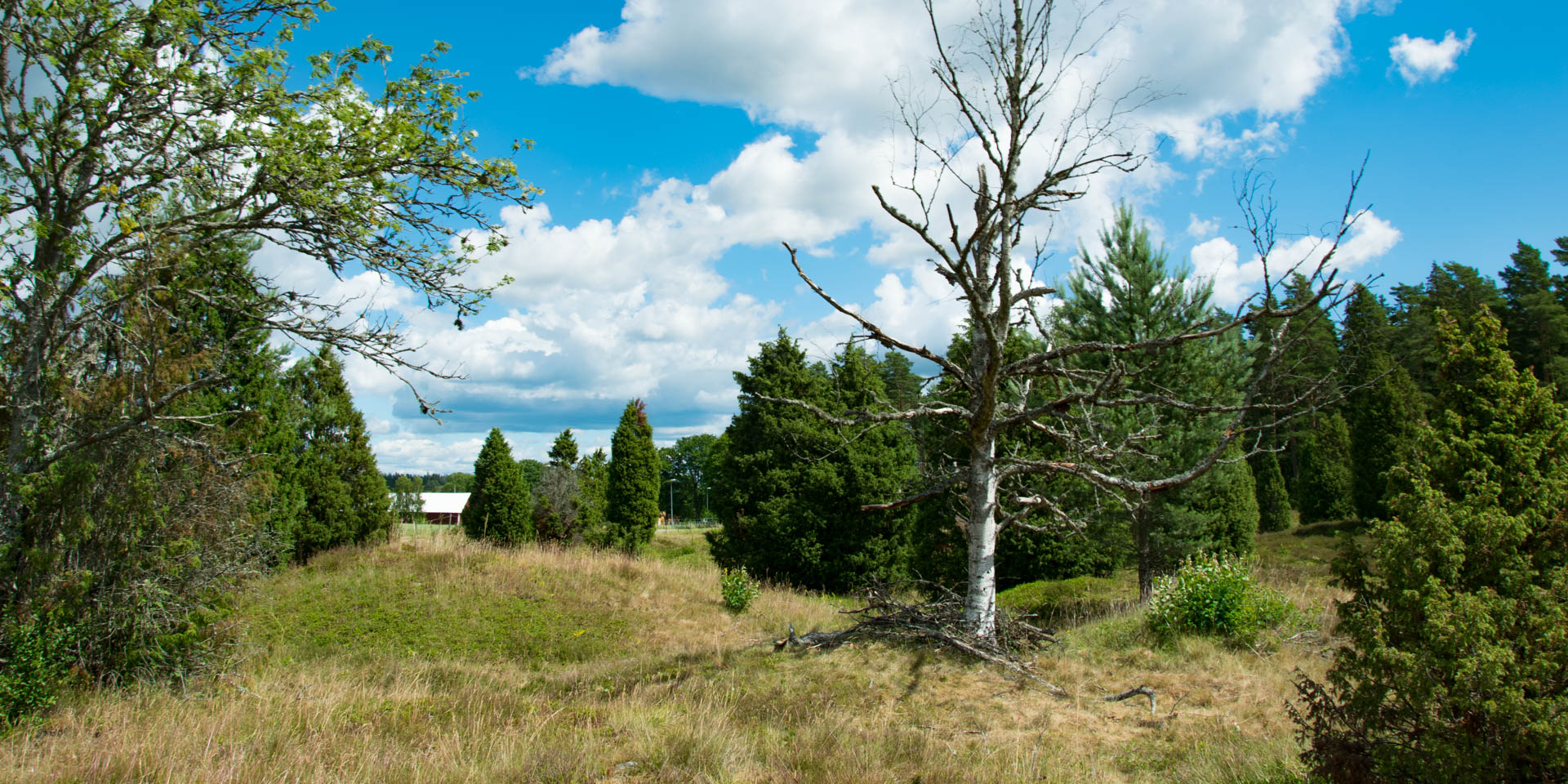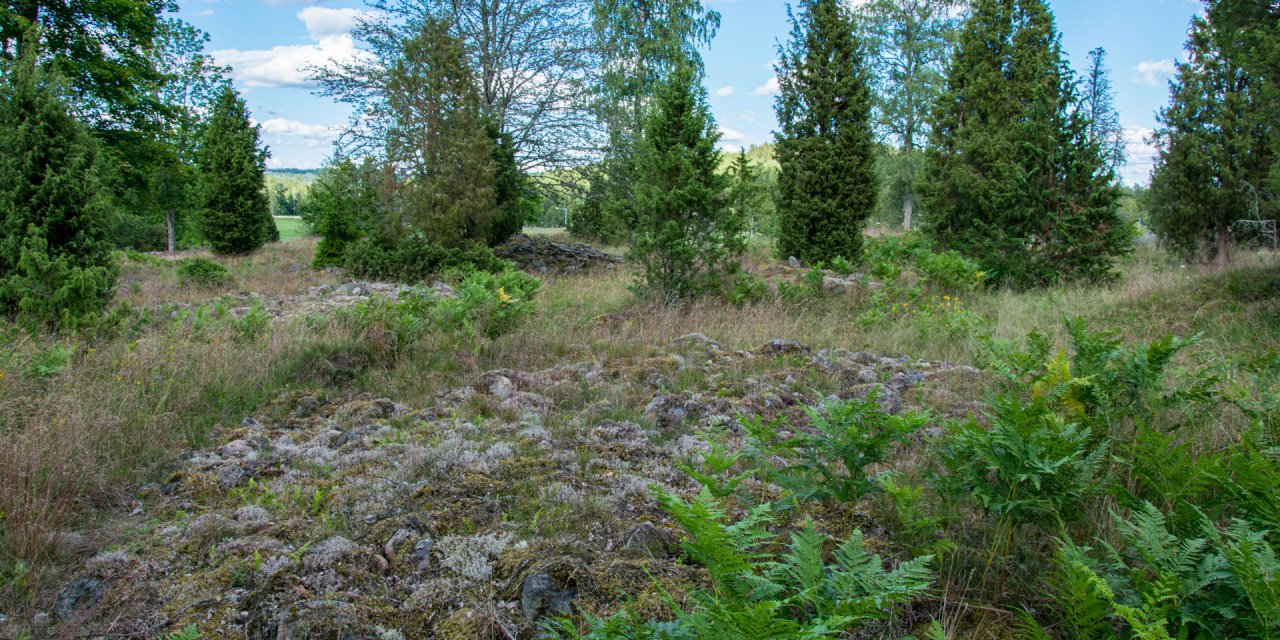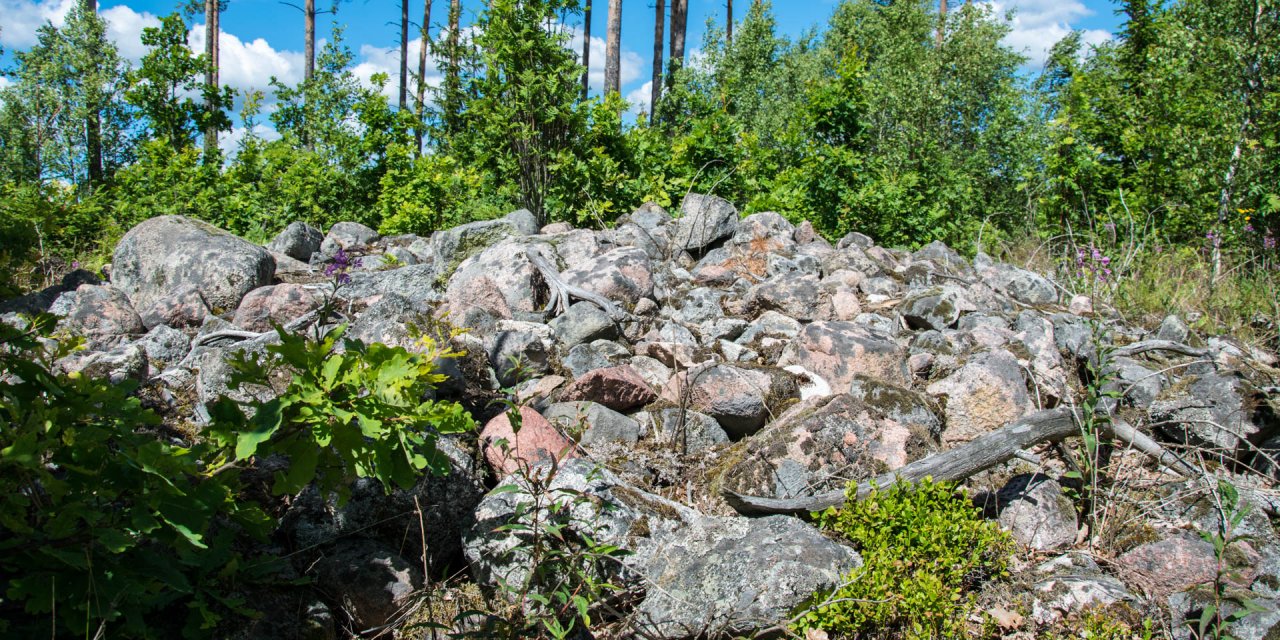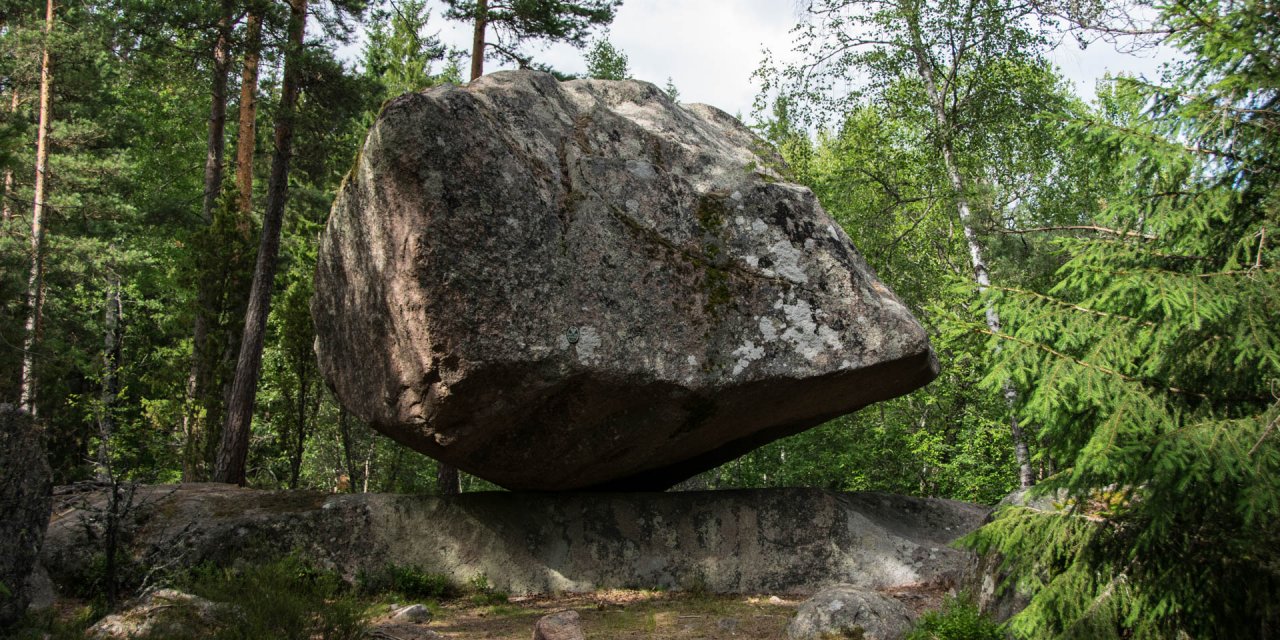

Byestads Gravfält
Småland's largest burial ground near Vetlanda
Byestads Gravfält is the largest Iron Age gravesite in Småland and is located on the eastern outskirts of Vetlanda, the main town in the municipality of Vetlanda Kommun on the edge of the Småland highlands.
The Byestads Gravfält is spread over two areas close to each other along Byestadsvägen. The smaller, approximately 160 x 30 metre section is located directly adjacent to the residential area to the left and right of the road. About 50 metres further east, the much larger section of the cemetery begins, measuring about 300 x 145 metres. Except for a small part, this section is located on the south side of Byestadsvägen and about two-thirds of it is in semi-open terrain with numerous juniper bushes. The last third is in a grove east of the small access road where the information board and parking area is located.
The tombs at Byestads Gravfält
In total, Byestads Gravfält consists of around 325 preserved graves from the later Iron Age and the Viking Age (500 – 1,050 AD). Among them are 144 burial mounds, the largest of which reaches a diameter of eleven metres and a height of 1.20 metres. In addition, there are 172 flat, round stone settings, 2 erratic blocks and six flat, three-armed stone settings, so-called treuddar. Byestad is also home to a unique six-armed stone setting, the only one known in the whole of Sweden. The tomb, designed like a six-pointed star, has a total diameter of 38 metres, with the individual spikes each being 15 metres long. In the middle, the tomb is about 1.60 metres high.
Unfortunately, the graves are overgrown with tall grass and partly low bushes, making it especially difficult to discern the differences between the individual forms. To discover the rare six-armed tomb, for example, it is best to orientate yourself towards the junction of the small access path and a large tomb enclosed with stone blocks in the immediate vicinity of the six-armed enclosure.
In the 17th century, the burial ground was mapped for the first time, and due to its size, it was believed at the time that a large settlement called Viitala had once been located here, the early historical predecessor of today's Vetlanda. The name Byestad, which means "disappeared village", also goes back to this theory, which remains a legend to this day, as archaeological investigations of the burial ground have not revealed any traces of an earlier settlement.



